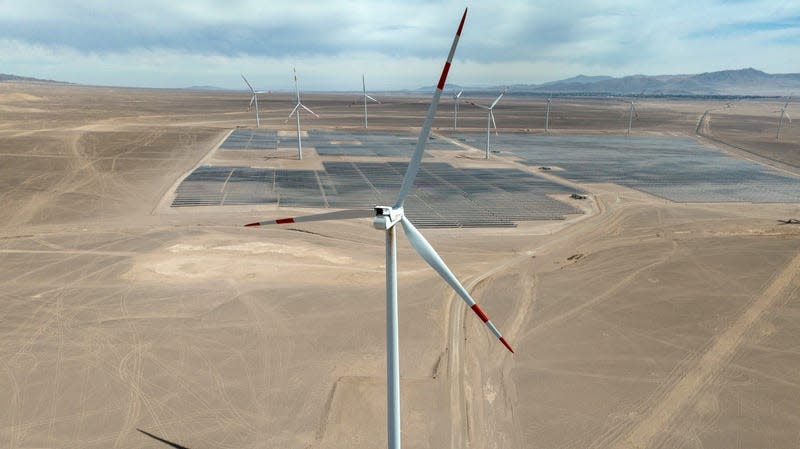Renewables Are Holding Back the Emissions Tide

Global emissions in 2022 are projected to rise just a fraction of the amount they increased by last year, thanks in large part to a surge in renewables installation and electric vehicle use, a major global energy organization said this week.
The report, issued by the International Energy Agency, predicts that global emissions growth this year will amount to less than 1%. That’s a hell of a lot smaller than the 6% rise the world saw last year. This slow growth comes amid a global energy crisis kicked off by the war in Ukraine and skyrocketing oil and gas prices, when coal demand could be rising as a result. But the analysis finds that the increased demand for non-oil and gas energy, it seems, has been offset not by coal but by growing renewable energy installations.
Read more
“The global energy crisis triggered by Russia’s invasion of Ukraine has prompted a scramble by many countries to use other energy sources to replace the natural gas supplies that Russia has withheld from the market,” IEA Executive Director Fatih Birol said in a statement. “The encouraging news is that solar and wind are filling much of the gap, with the uptick in coal appearing to be relatively small and temporary.”
Global emissions skyrocketed in 2021, driven partially by rebound after the pandemic restrictions of 2020. In 2021, CO2 emissions grew by a jaw-dropping 2 billion tonnes. In contrast, the IEA predicts that this year will see an increase of just 300 million tonnes of CO2. And the increase could have been a lot worse if renewables weren’t around: Without new renewable energy installations and electric vehicle deployment, the report finds that CO2 emissions could have risen by as much as 1 billion tonnes.
“Policy actions by governments are driving real structural changes in the energy economy,” Birol said. “Those changes are set to accelerate thanks to the major clean energy policy plans that have advanced around the world in recent months.”
Solar and wind energy are driving a lot of these saved emissions. The report finds that the global capacity for these forms of energy will increase by more than 700 terawatt-hours this year—the largest rise in a year on record, representing a savings of 600 million tonnes of CO2. This growth in solar and wind generation accounts for two-thirds of the new renewable capacity on the grid. And while hydropower struggled amid record-breaking droughts around the world, the growth of that form of energy has also increased since last year.
It’s not all rosy, however. The report finds that emissions from coal-fired power did increase, albeit by a relatively small amount—2%—driven by some countries replacing natural gas demand with coal use. And despite historic high prices, demand for oil is higher than any other fossil fuel this year, driven primarily by the aviation sector. The increase in oil demand is expected to add some 180 million tonnes of CO2 to the atmosphere.
More from Gizmodo
Sign up for Gizmodo's Newsletter. For the latest news, Facebook, Twitter and Instagram.

